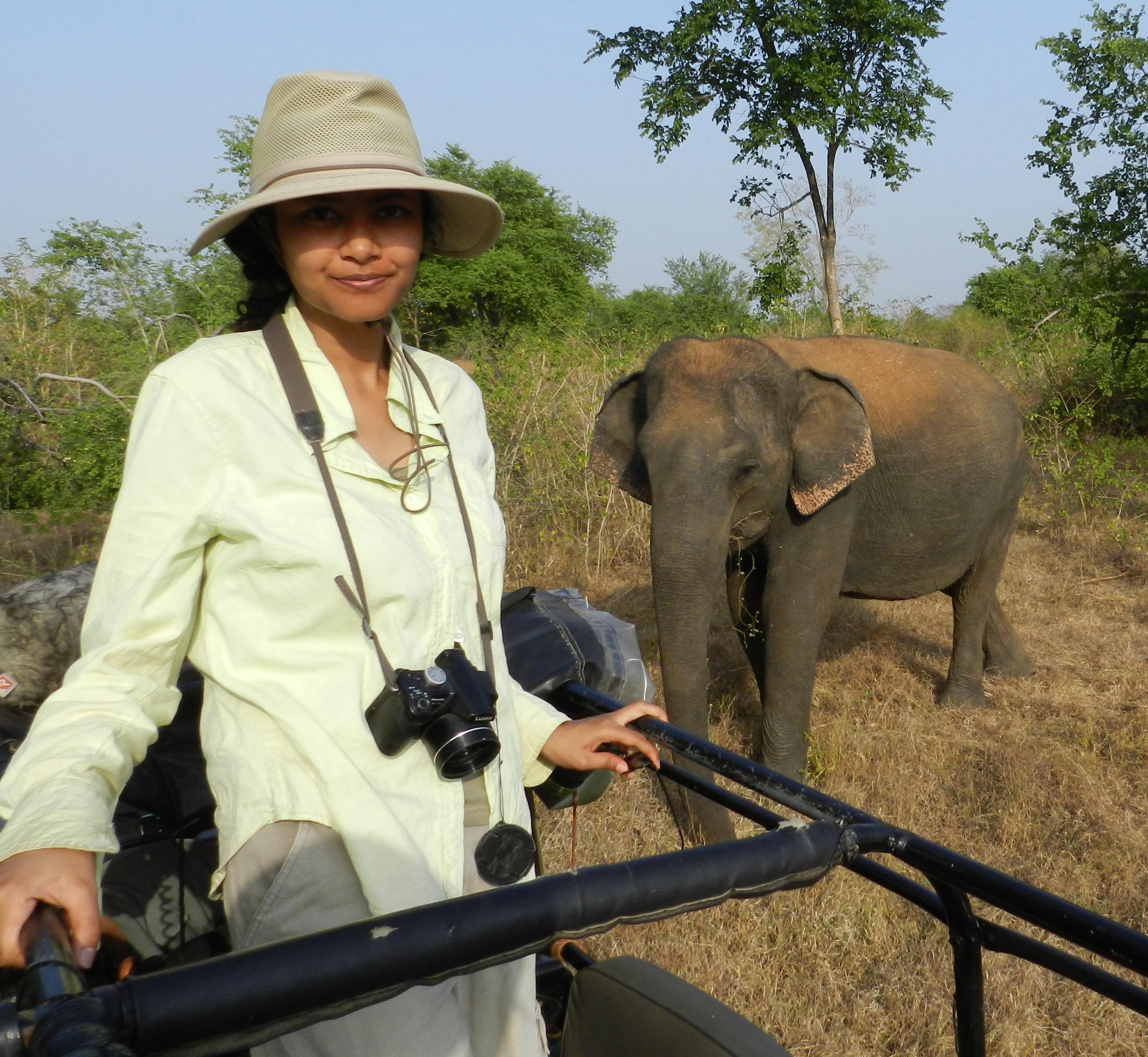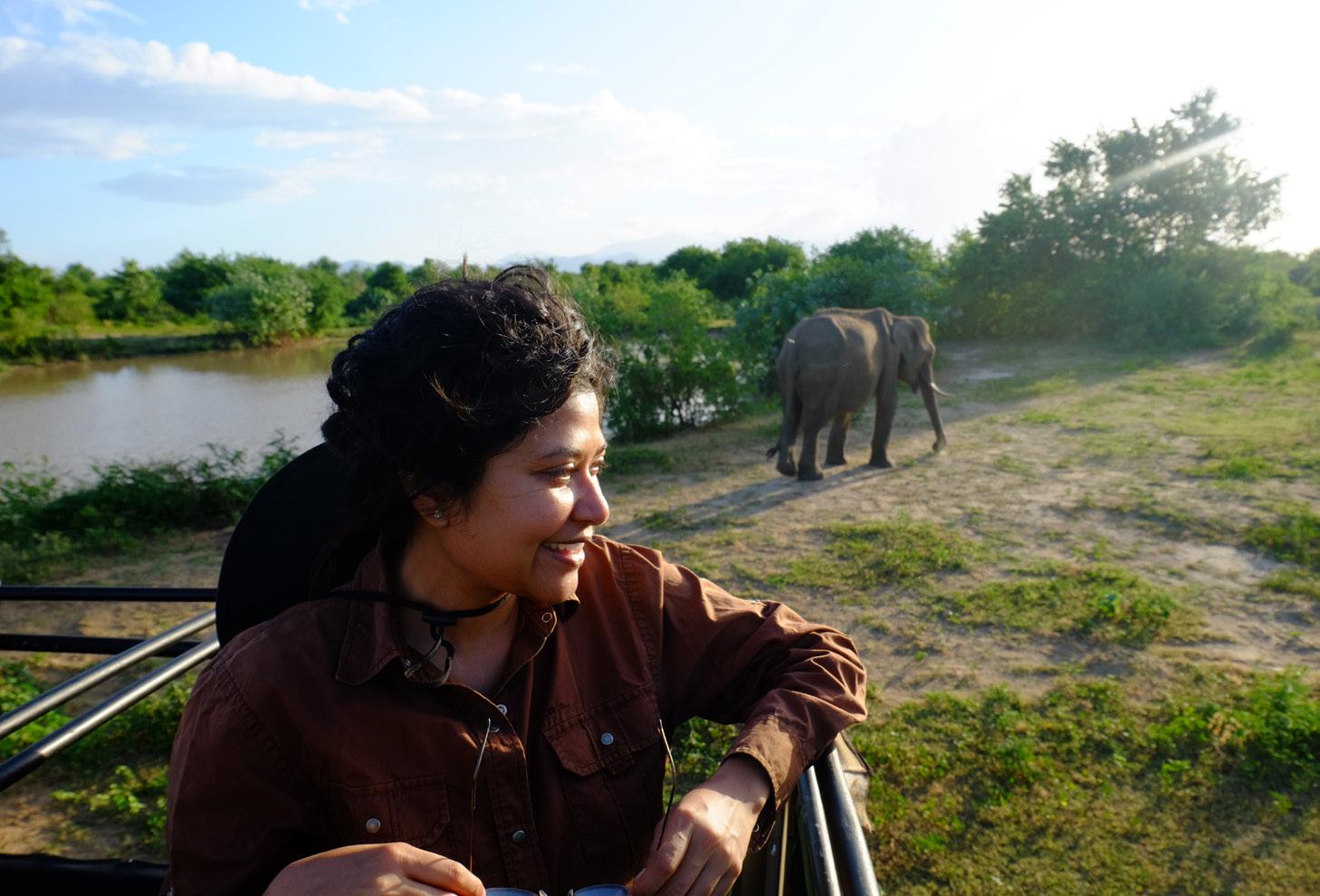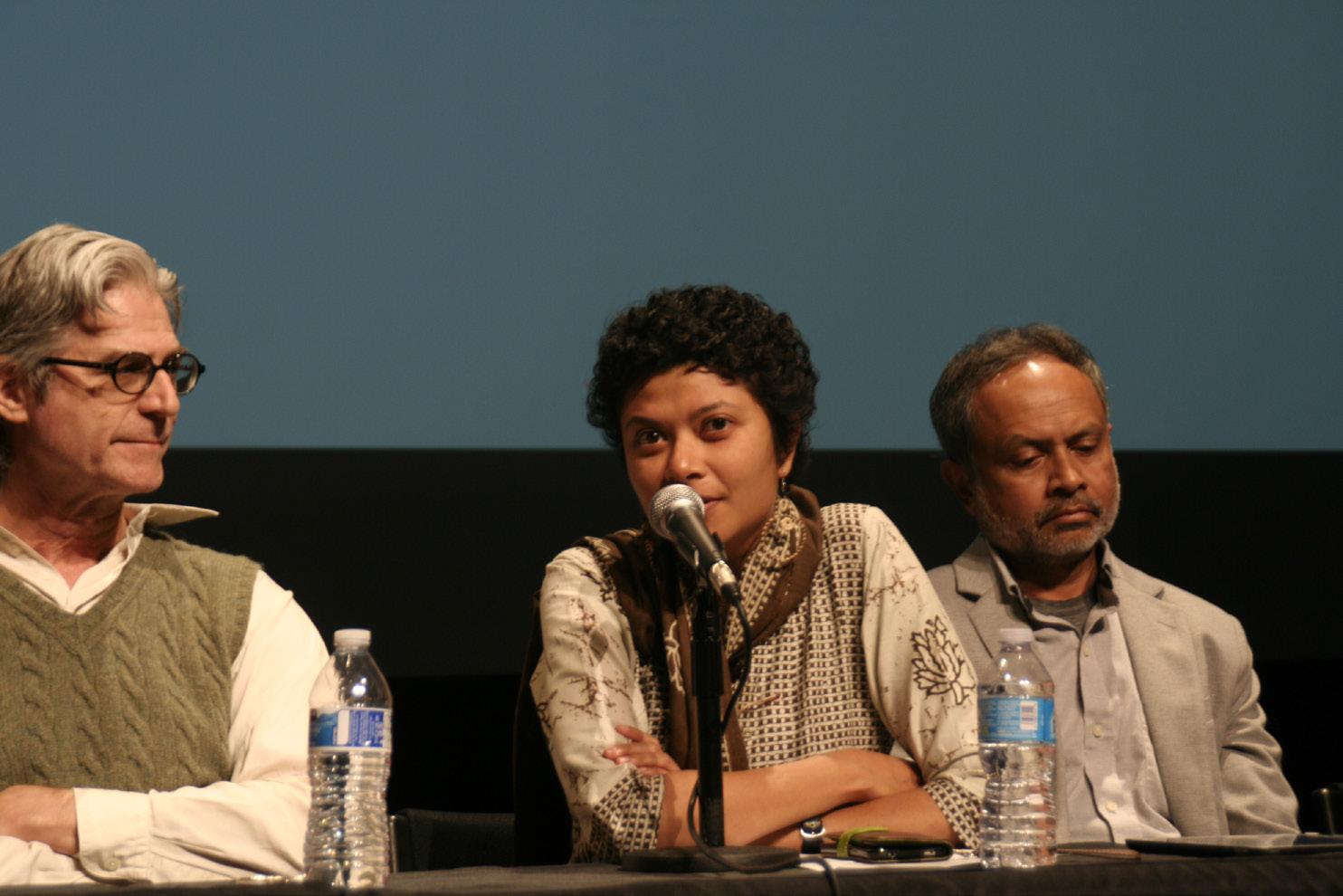
6 minute read
Elephants Loom Large
Elephants Loom Large Over Habitat Research
With knowledge and empathy – including for other humans – Dr. Shermin de Silva helps drive conservation in Sri Lanka
Conservationists need to protect animals’ natural habitats along with surrounding human communities, according to Dr. Shermin de Silva, an environmental scientist working to help save various endangered species in Asia.
Based in Sri Lanka, De Silva is president of Trunks & Leaves, a nonprofit organization she founded in 2010 to facilitate the peaceful coexistence of people and Asian elephants. Once a common sight across vast expanses of south and southeast Asia, the animal is now found only in small pockets of these regions.
THREE MAIN THREATS
The three main threats to Asian elephants are habitat changes, human-elephant conflict, and accidents, the scientist told SEEMA. One major lesson she has learned is that conservation efforts must begin with empathy with other humans.
“You have to truly understand why people behave as they do so that efforts to protect nature do not simultaneously impose social injustices on the people whose daily lives and very survival depend on their relationship to the landscape,” De Silva said. “Conservation can only succeed if it is founded on a desire to help people and nature flourish together, rather than falsely putting one at odds with the other.”
AN ELEPHANT IN THE YARD?
Ever since 2005, De Silva has been observing the behavior of up to about 700 wild elephants in Sri Lanka’s Udawalawe National Park. That was the year she returned to Sri Lanka from the U.S. after becoming a Ph.D. candidate at the University of Pennsylvania.
The Udawalawe region has long lured elephants thirsty for water, especially in times of drought. It has also been abundant with grasses and shrubs for elephants to munch on as they roam. However, the habitat has changed dramatically since the construction of a nearby dam in 1970, according to the ecologist.
Fenced-in human settlements and farming gradually replaced a lot of native vegetation. Human settlers then wanted to keep elephants away from agricultural lands.
“We have only to ask ourselves how we would feel about having large and potentially dangerous wild animals roaming in our back yards,” De Silva said. “It’s one thing to love elephants on weekends, or from a continent far removed; it’s another to live with them. Elephants can be tough to live with, given their requirements for a lot of land and the potential conflicts with human activities, notably agriculture.”
To make matters worse, human settlements eventually blocked off an ancient jungle corridor the elephants had traditionally used to migrate between Udawalawe and the Bogahapattiya Forest Reserve, another protected area. Such corridors reduce the need for elephants to stray into humanoccupied areas in search of food and water.

HABITAT DESTRUCTION HITS HUMANS, TOO
As with animals, destruction of natural habits also impact humans adversely.

Shermin De Silva on the field.

“Natural areas lock up carbon stores and the very process of developing them releases an incredible amount of emissions into the atmosphere with consequences that will last for decades, if not centuries,” De Silva said. “They are also intimately connected with natural hydrological cycles, which are the basis of our subsistence and food cultivation. Environmental destruction results in negative feedback, whereby the landscape becomes progressively less capable of sustaining our food production, water consumption, and basic survival. This is topped off by dramatic and catastrophic events, such as storms and droughts.”
One of De Silva’s biggest concerns is with future availability of water.
“Sri Lanka and many parts of South Asia are projected to be severely water stressed. if they are not already, which will be catastrophic for human populations both in terms of their daily needs and economic needs in communities that are still largely agricultural,” she said.
“Perversely, some areas may be subject to more extreme storms and flooding than seen before.”
Meanwhile, human activities can hamper the ability of wildlife to respond to extreme weather by moving to another habitat.
“This includes fish, which may be trapped by our irrigation projects,”
De Silva said. “Conversely, some species may invade habitats they have not occurred or thrived in before as a result of the changing climate, outcompeting and displacing the native species. All of which is to say, we have a somewhat chaotic time ahead of us.”
The effects of environmental events are not just local, but global.
“Rainfall in Sri Lanka depends on monsoons that originate in India.”
she pointed out. “Deforestation for biofuel, timber, tea and coffee production is driven by consumer demand both locally and internationally. Actions in one country have consequences in another. We need to recognize once and for all that nations are not independent entities insofar as the environment is concerned,” she elaborated.
LEARNING ABOUT NATURE
De Silva’s fascination with nature has roots in her childhood.
“I’ve always loved watching animals, which as a kid growing up in Sri Lanka I did mainly through TV documentaries,” she said. “I didn’t become aware that the environment actually needed protecting until I was about 11 or 12 years old, when I saw a documentary about the impact of the tuna fishing industry on dolphins. Those visuals had a powerful effect and sent me on a whole path of discovery that the nature I so dearly loved was under threat.”
De Silva then moved on to college, receiving a B.A. in biology and philosophy from the University of California at Berkeley in 2004. “While in college, I saw a photography exhibit by Joel Sartore, called the Photo Ark. It is an ambitious effort to present portraits of threatened species, one by one.” The event spurred her to move into researching living animals instead of pursuing her previous passion for paleontology – the study of fossils.
WHY STUDY ELEPHANTS?
“By virtue of living in many different types of habitats and ecosystems, ranging from dry grasslands to dense forests, Asian elephants are representatives for a wide array of landscapes and their biodiversity,” De Silva said. “They are also culturally iconic and have long standing significance to many different human communities, which makes them relatively unique. Nevertheless they can be difficult for humans to live with. So they are a perfect representative of the many conservation challenges for wildlife and wild places today. If we can solve these problems for elephants and learn from the experience, I’m hopeful that it will have spill-over effects for many other species, as well.”
De Silva launched Trunks & Leaves in 2010, after receiving her doctoral degree from the University of Pennsylvania.
According to her, “Trunks & Leaves was created to spotlight these issues and draw together resources and like-minded efforts to overcome them, recognizing that Asian elephants need targeted attention that is distinct from efforts directed toward other charismatic species such as tigers or their sister species, African elephants.”











